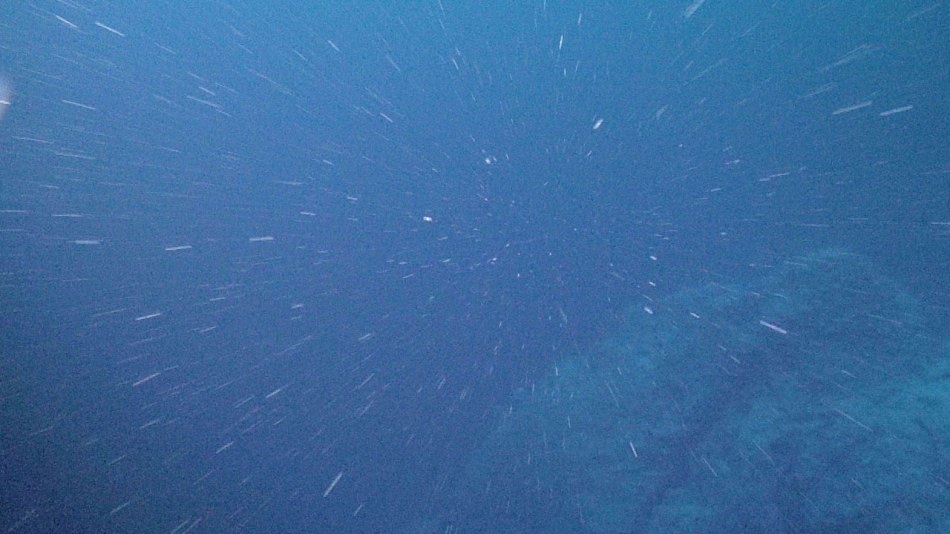Jul 27 2016
Plankton, which are small marine plants, absorb almost the same amount of atmospheric carbon that is used to create plants on land.
 Marine debris clumps together to form carbon-rich “marine snow” that falls throughout the world’s oceans. (Credit: NOAA)
Marine debris clumps together to form carbon-rich “marine snow” that falls throughout the world’s oceans. (Credit: NOAA)
When plankton die and sink, their sinking corpses are consumed by bacteria and as a result, their carbon is released back to seawater. However, when plankton sink to greater depths before being eaten, their carbon remains trapped for centuries in the deep ocean.
How much of this occurs in various regions of the ocean would appear as an academic question, except during an age when people are releasing record-high levels of CO2 into the air and wondering where all that carbon released would go in the future.
A new approach has been used in a University of Washington (UW) study to obtain information about the fate of marine carbon at a global level. The study reveals that organic carbon is exported by the polar seas to the deep sea, where heat from the sun can no longer be trapped around five folds as efficiently as in other regions of the ocean.
The study results have been reported in the Proceedings of the National Academy of Sciences.
The high latitudes are much more efficient at transferring carbon into the deep ocean. Understanding how this happens will certainly allow a more complete prediction of ocean responses to climate change.
Thomas Weber, Assistant Professor, University of Rochester
There are many carbon sinks or routes on the planet for transferring heat-trapping carbon from the atmosphere into other regions of the Earth system. This sink is a literal one. Marine snow is formed when carbon-rich plankton detritus is clumped together and is then drifted down through the water, where deeper-dwelling organisms feed on it. The constant organic carbon supply in particles from the surface to greater depths of the ocean is called “biological pump.”
The biological pump was believed to operate at similar strength across the oceans. However, a strong regional pattern is revealed by the new study.
According to the authors, around 25% of the organic particles that sink from the surface in the polar seas reach at least 1 km, which is the depth needed for long-term storage in the seafloor or deep waters. Only 5% of sinking carbon in the subtropics can reach that distance, while the remaining carbon is discharged into shallower water, from where it can return to the atmosphere. The intermediate value of the tropics is around 15%.
This highlights the importance of the polar ocean — the cold, high-latitude parts of the ocean — for their ability to store carbon over long time periods.
Curtis Deutsch, Associate Professor of Oceanography, UW
The growth of marine plants at the sunlit surface of the ocean is well-documented. However, it is not clear what occurs a mile down. For the past several years, researchers have placed floating sediment traps at varying depths to gain knowledge about how deep the particles can reach. However, only inconclusive results have been obtained so far.
“It’s obviously quite expensive to deploy these traps on a scale that you would need to make global estimates,” Weber said.
A different approach is used in the new study. The researchers studied phosphate, which is a nutrient consumed by the plankton in the surface and discharged with carbon upon decomposition of the particles. Using a computer model of ocean currents, they then determined the depth at which phosphate is released.
By looking at the products of the decomposition we could look at it in the opposite way but come to the same information, which is how deep stuff gets before it decomposes.
Curtis Deutsch, Associate Professor of Oceanography, UW
The researchers determined that around 15% of the carbon in ocean plankton reaches the depth required for long-term storage in the deep ocean. This result is in good agreement with the earlier estimates. However, the regional pattern provided surprising results. The researchers attempted to understand the reasons. One of the factors could be temperature because decomposition will be slowed on the way down by cold water just like refrigerators. However, the results could not be fully explained by the temperature difference.
The size of the organisms forming the marine snow explained a range of observations. Warm, nutrient-poor subtropical oceans are “marine deserts,” which are mainly dominated by tiny picoplankton. Larger lifeforms like diatoms can be supported by nutrient-rich polar seas, and to a lesser degree the equator, and they go down like a proverbial stone.
“Simply because they sink faster, these large phytoplankton are more likely to reach the deep ocean before being consumed,” Weber said.
Oceans are expected to support only fewer plankton overall under climate change. It is also believed that water temperatures will increase and currents and tropics will slow and expand, respectively.
Even though this study is not directly about climate change, it provides us with a new way of thinking to apply to climate-change scenarios. As those regions dominated by smaller plankton tend to expand, it’s likely that the ocean will become less efficient at locking carbon away from the atmosphere.
Thomas Weber, Assistant Professor, University of Rochester
The Gordon and Betty Moore Foundation funded the research work. UW oceanography postdoctoral researcher Jacob Cram and graduate student Shirley Leung, and Timothy DeVries at the University of California, Santa Barbara are the other co-authors of the study.